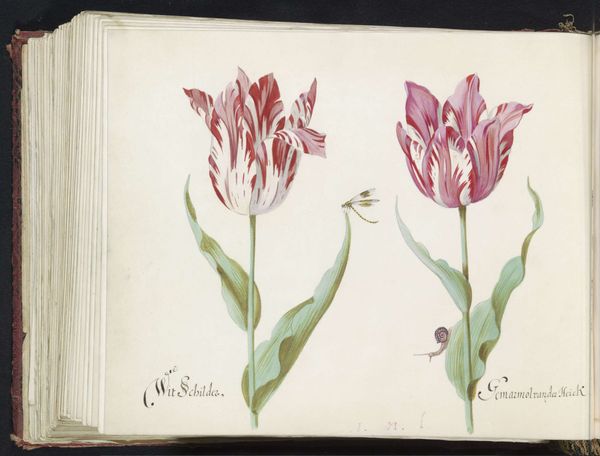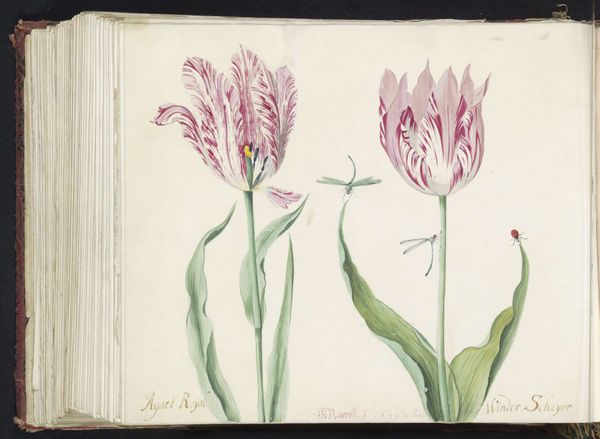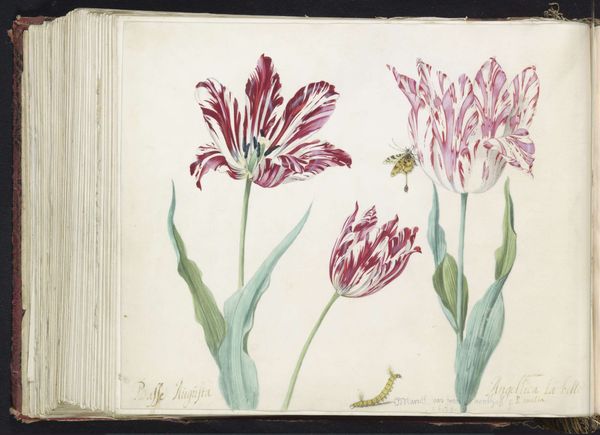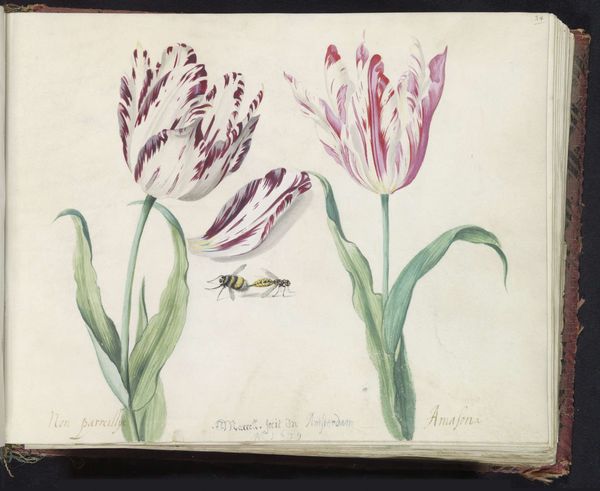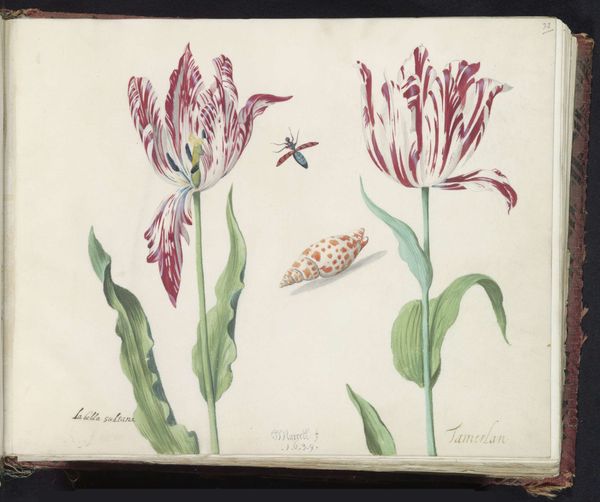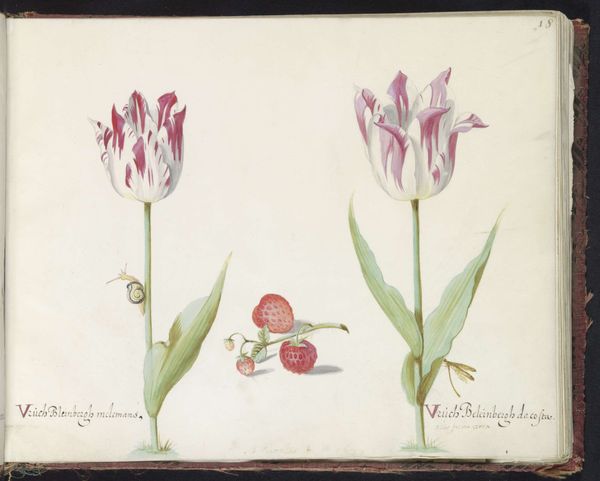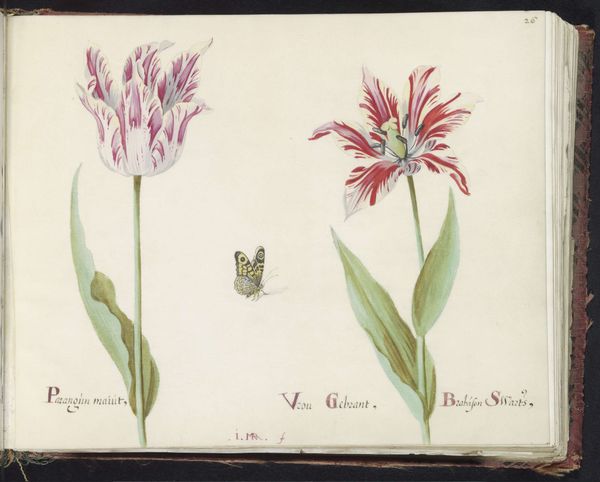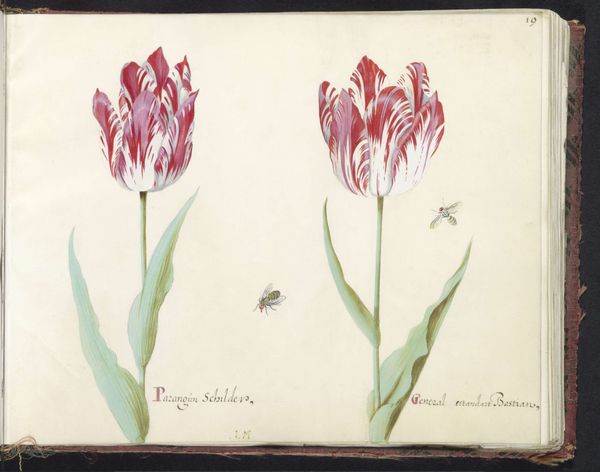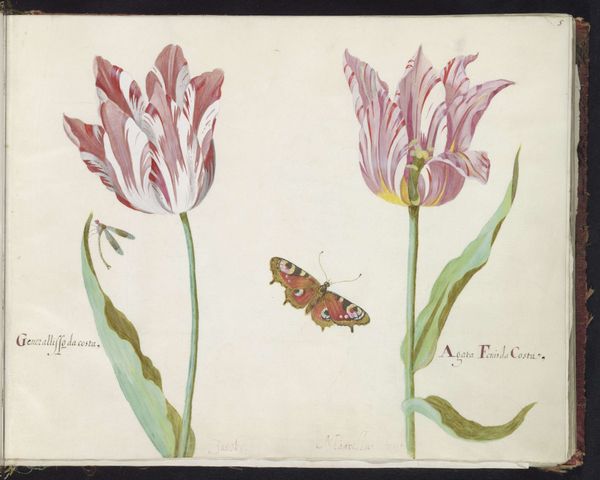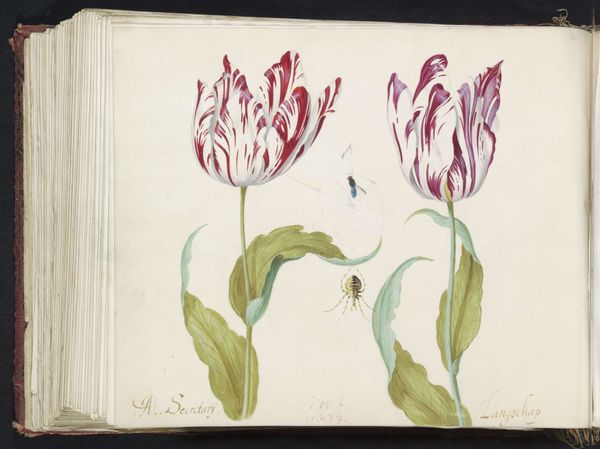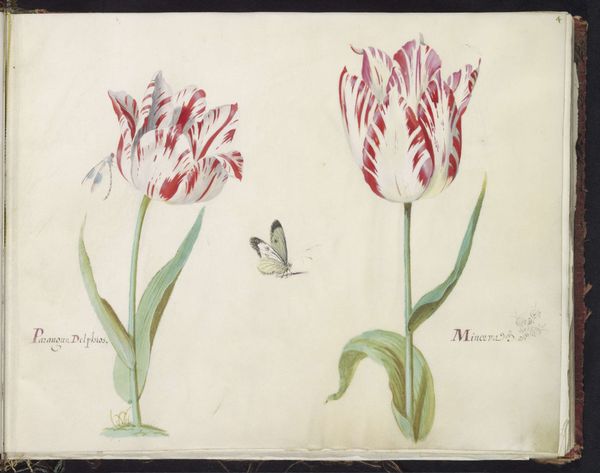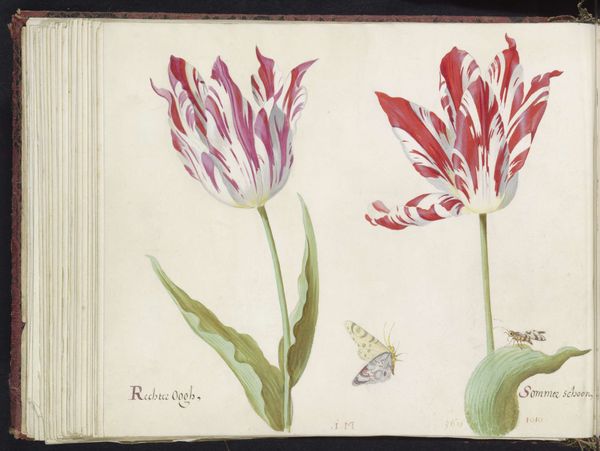
painting, paper, watercolor
#
dutch-golden-age
#
painting
#
paper
#
watercolor
#
watercolour illustration
#
genre-painting
#
botanical art
#
watercolor
#
realism
Dimensions: height 265 mm, width 335 mm
Copyright: Rijks Museum: Open Domain
Editor: Here we have Jacob Marrel’s “Two Tulips with Two Yellow Fruits,” a watercolor on paper from 1637. It's a beautiful botanical illustration, almost dreamlike. I'm curious; what draws your eye in this piece? Curator: Well, first, its creation during the peak of "Tulip Mania" in the Dutch Golden Age is critical. These weren’t just pretty flowers; they were commodities, subject to intense speculation. The artist, then, isn't just documenting nature but also engaging with the socio-economic frenzy of his time. Note how the detailed rendering emphasizes their uniqueness - key to their market value. Do you notice any features that are somewhat unique and striking? Editor: Yes, especially the intricate patterns and striations in the tulip petals, how meticulously they’re rendered. It's almost obsessive, a kind of visual cataloguing. Curator: Precisely. This wasn't simply about aesthetics. These were effectively portraits of highly valuable objects. Consider the role that the names given to each flower play in cultivating desirability and uniqueness, too. What impact do you think the context of display would have on this watercolour? Editor: So, not just scientific illustration, but a form of status symbol as well, and of marketing? And since it’s watercolor on paper, likely bound in an album and displayed on a table rather than on the wall as fine art? Curator: Precisely. Furthermore, paintings such as these, as a reflection of cultural and social phenomenon, mirror the politics of display and wealth during that period. We might consider these paintings a record of social and economic activities, captured through an aesthetic lens. It moves us beyond just thinking of pretty things but thinking about the place and value of these images, and the complex network that the work exists within. Editor: That makes the image so much richer; it’s a document of history, economy, and aesthetics all at once. I never would have considered the social implications of a flower painting.
Comments
No comments
Be the first to comment and join the conversation on the ultimate creative platform.
